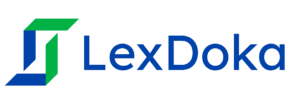¿En qué podemos ayudarte?
What are the differences between lease and sale?
What are the differences between lease and sale?
In this article, we explain the main differences between leasing and selling.
Leasing and selling are two ways of transferring either ownership or use of a good or asset. However, they have important differences that should be known before choosing one or the other option.
In the first place, the lease is a contract in which the owner of a good or asset, called the lessor, assigns the right of use to another person, called the lessee, in exchange for periodic rent. The lease has a fixed term, which may or may not be renewable. The lessor retains ownership of the property or asset, and the lessee only has the right to use it.
Some of the advantages of leasing are:
- It allows access to a good or asset without having to pay its full price.
- Reduces maintenance and repair costs, which are usually borne by the landlord.
- It offers flexibility to change the property or asset according to the needs or preferences of the lessee.
- Facilitates adaptation to market conditions and technological innovations.
On the other hand, some of the disadvantages of leasing are:
- It does not allow ownership of the good or asset to be acquired, unless a purchase option is agreed at the end of the contract.
- It implies the payment of a constant rent, which may be higher than the cost of financing the purchase.
- Limits the use and disposal of the property or asset, which must comply with the conditions established by the lessor.
- It can generate conflicts between the landlord and the tenant due to breaches or claims.
Second, the sale is a contract in which the owner of a good or asset, called the seller, transfers the property in full to another person, called the buyer, in exchange for an agreed price. The sale is final and cannot be reversed. The seller ceases to have any right over the good or asset, and the buyer becomes the new owner without time limits.
Some of the advantages of selling are:
- It allows obtaining full ownership of the good or asset, with all the rights and obligations that this entails.
- Avoids paying periodic rent, which may be higher than the purchase price.
- It offers freedom to use and dispose of the good or asset according to the interest of the buyer.
- Generates personal or business assets that can be revalued or serve as collateral.
Likewise, some of the disadvantages of selling are:
- It requires the payment of the total price of the good or asset, which may involve a large outlay or debt.
- Increases maintenance and repair costs, which are borne by the buyer.
- Reduces the flexibility to change goods or assets in case of need or preference of the buyer.
- It makes it difficult to adapt to market conditions and technological innovations.
As can be seen, the lease and the sale have significant differences that affect the ownership, use and cost of the good or asset. Therefore, the choice between one or the other option will depend on the type of good or asset, the objective pursued and the personal or business circumstances.

